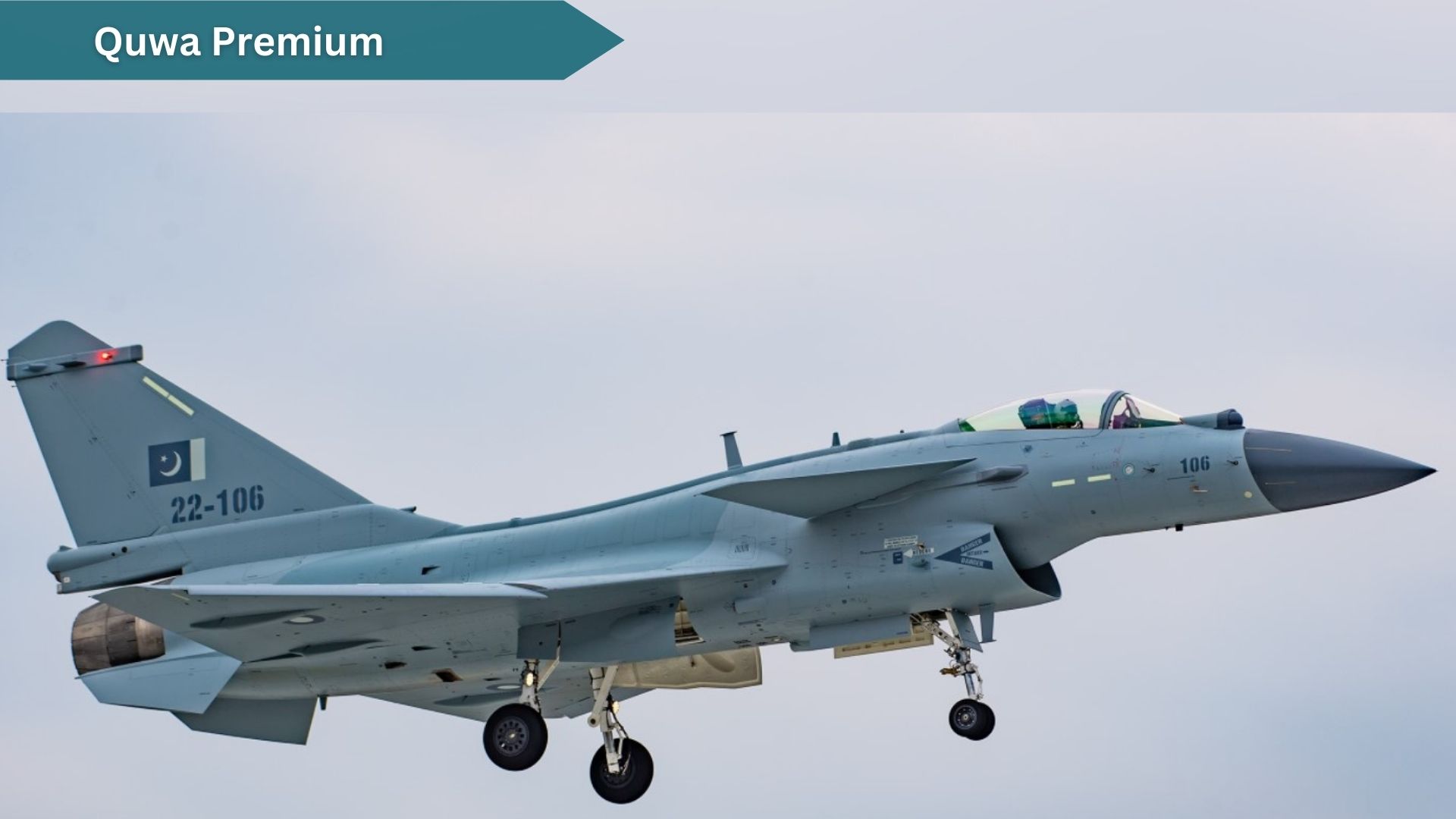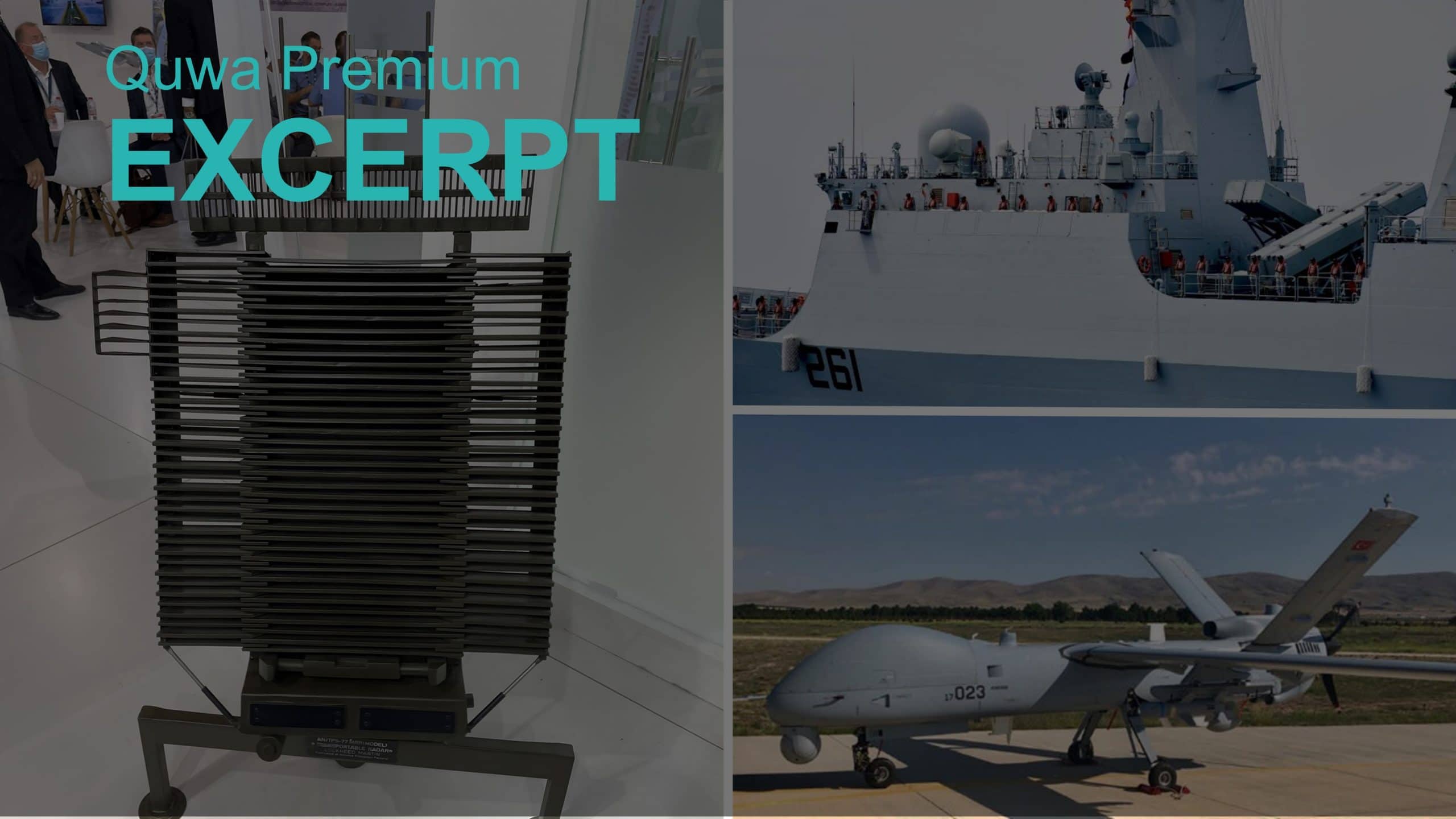9271Views

China is Pakistan’s New ‘Qualitative Driver’ Quwa Premium
Pakistan’s military modernization efforts have undergone a major transformation over the past 20 years, shifting from dependency on the West for cutting-edge weapon systems to relying on the Chinese for advanced military technologies, such as new high-performance fighter aircraft, long-range surface-to-air missile (SAM) systems, and critical inputs for original programs.
This new procurement trend was driven by two main factors:
First, Pakistan was unable to get similar solutions from the United States and Western Europe due to supplier restrictions, such as high costs or the preference of Western governments and companies to access the larger, and potentially more lucrative, Indian defence market.
Second, China became one of the world’s top two turnkey industrial and technological powers, one evidently capable and willing to develop and export contemporary military solutions. From land to sea to airborne systems, China now underpins Islamabad’s quest for qualitative parity in South Asia’s increasingly contested security environment.
However, Pakistan’s apparent gain of readily accessing cutting-edge armaments – including those that can potentially disrupt India’s advantages in some areas – is just one aspect of this shift. The second aspect is how other defence industry players, be it within the U.S., Europe, Russia, or new emergent sources like Turkey, can adapt to this new reality.
The Erosion of Western Arms Access
For decades, Pakistan relied on American and European suppliers for ‘high-end’ systems. No example better showcases the story of this dependence than the F-16 Fighting Falcon.
When it was inducted in the 1980s, it offered the PAF the optimal ‘new generation’ solution of that time. The F-16 was technologically at-par with the best the IAF could acquire at the time (like the Mirage 2000), but it was also relatively cost-effective. So, the PAF tried inducting the F-16 in large numbers with the hope of tackling the IAF’s qualitative and quantitative edge.
However, the U.S. withheld the F-16 in a bid to dissuade Pakistan from completing its nuclear weapons program. The sanctions that followed (via the Pressler Amendment) set Pakistan’s air modernization plans, while India could push ahead with a large-scale Su-30MKI purchase from Russia, alongside other high-tech acquisitions.
Following 9/11, the U.S. once again permitted Pakistan to buy F-16s, and the latter expanded its fleet through an order of 18 new-built F-16C/D Block-52. It also modernized its existing fleet through Mid-Life Update (MLU) kits that elevated the older F-16A/B Block-15s up to technically similar standards as their new-built counterparts.
By the 2010s, the PAF caught up with the IAF in key areas, such as the deployment of more multirole fighters and wide-scale use of beyond-visual-range air-to-air missiles (BVRAAM), to name a few. However, by the mid-2010s, the U.S. again put its defence ties with Pakistan on ice, derailing the PAF’s plans to modernize its fighter fleet once again.
Seeing the PAF (and the other tri-services arms) pivot to China in lieu of the West was never a new story. In fact, every time the U.S. sanctioned Pakistan, the latter engaged China for tanks and aircraft to replace older hardware or partially close capability gaps.
However, Washington’s most recent rounds of shadow-sanctions would lack the same impact of slowing Islamabad’s defence efforts as earlier ones.
By 2020 or 2021, the PAF ordered the J-10CE from the Aviation Industry Corporation of China (AVIC). The story with the J-10CE was not that the PAF acquired a Chinese fighter in lieu of a Western one; rather, the story is that the fighter in question carried all of the contemporary air warfare technologies the PAF needed from the F-16.
From an active electronically scanned array (AESA) radar to helmet mounted display and sight (HMD/S) system to compatibility with longer-ranged BVRAAM and a high-maneuvering within- visual-range air-to-air missile (WVRAAM) and more, the J-10CE package was, on face-value at least, as technically promising as the package on the latest F-16 Block-70/72.
However, unlike the J-10CE, there was no scenario where the PAF could have been offered the F-16 Block-70/72. Likewise, the PAF was also not able to access long-range air defence systems from the West or advanced drones, much less stealth fighters.
Instead, after 2020, the PAF acquired the Chinese HQ-9BE long-range SAMs, which offers 280 km. It also acquired the Wing Loong 2 unmanned aerial vehicle (UAV).
China’s Defence Technology Ascent is Pakistan’s Edge
Beijing’s advancements in industrial efficiency, avionics, propulsion, and materials science now position it as a global leader in advanced military systems.
This progress is evident in many of its new solutions, such as the J-35 next-generation fighter aircraft (NGFA), which the PAF is apparently seeking. However, a potential J-35 acquisition is not a reactionary ‘catch up’ move nor a compromise option.
From its low-observable (LO) design, large twin-engine configuration for range and payload, and tightly integrated sensor and avionics suite, the J-35 offers the qualities (albeit, on paper for now) of most other high-performance options on the market. On the surface, the J-35 can offer a ‘Rafale-plus’ or ‘Super Hornet-plus’ type of capability where it offers comparable range, and electronics, but with an internal payload.
Once again, the PAF could never realistically get a Rafale or Super Hornet, yet it can procure, at minimum, a directly comparable platform in the J-35. In practical terms, the PAF can match IAF procurements at the highest technical level (which the IAF set with the Rafale), if not even exceed that in some respects (e.g., with the J-35 LO qualities).
If China opts to make the J-35 available for export, then one can expect it to potentially market more sophisticated air defence and drone solutions in the future as well. Hence, concepts like an ‘Iron Dome’, for example, becomes a tenable reality for Pakistan, should it have an interest in such technologies and solutions.
End of excerpt (972/2,714 words)
Existing Quwa Premium members can log in below
Note: Logged in members may need to refresh the article page to see the article.


